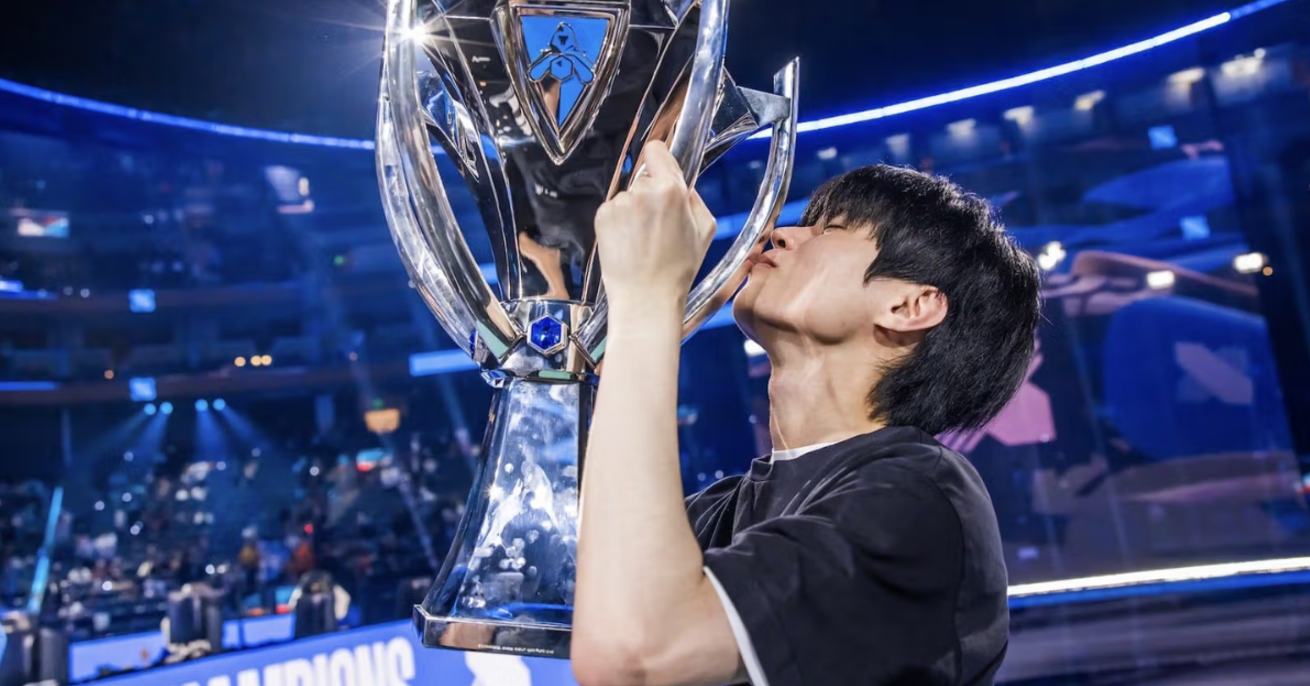Understanding the League of Legends Esports Salary Cap: A Complete Breakdown

Riot Games has recently implemented a salary cap in League of Legends esports, a significant move aimed at controlling the rapid increase in player salaries. This mechanism, commonly used in traditional sports leagues like the NBA, is designed to create a more balanced competitive environment. By setting a limit on how much teams can spend on player salaries, the salary cap helps to prevent wealthier teams from monopolizing talent, thereby promoting fair competition across the league. The introduction of the salary cap also has implications for team management and strategy. Organizations will need to be more strategic in their player recruitment and retention, balancing their budgets while still fielding a competitive roster. This could lead to a more diverse range of teams succeeding in the league, as financial disparities are minimized.
Moreover, the salary cap could influence player negotiations. Players may find themselves with more leverage, as teams will be compelled to offer competitive salaries within the cap limits. This shift could lead to a more equitable distribution of talent across the league, enhancing the overall quality of play. Understanding the salary cap’s impact on League of Legends esports is essential for fans, players, and organizations alike. It represents a pivotal change in how the competitive landscape will be structured, ultimately shaping the future of the game.
Table of Contents
The Escalating Expenses of Esports Talent
In recent years, the esports industry has witnessed an unprecedented rise in player salaries, particularly in games like League of Legends. This surge has created significant financial pressures for team organizations, which now face the challenge of sustaining these escalating costs. From around 2017 to 2019, the North America League of Legends Championship Series (LCS) experienced a notable increase in average salaries, which by 2021 ranged from $300,000 to $410,000 for many players. However, these figures only scratch the surface, as star players often command even higher wages. Take, for instance, the case of SwordArt, who signed with Team SoloMid (TSM) for a staggering $6 million over two years. Similarly, some Chinese players have reported annual salaries soaring to as much as $6.6 million. Such figures highlight the immense financial stakes involved in attracting top talent, as these salaries reflect not just the players’ skills but also the increasing commercialization of esports.
The influx of venture capital investments during the latter half of the 2010s has played a pivotal role in this growth. As investors recognized the potential of esports, they poured significant funds into teams and organizations, allowing them to compete for the best players. This wave of investment has led to organizations feeling pressured to absorb financial losses in order to secure winning rosters. The need to build successful teams that can perform at high levels and attract viewership has driven many teams to prioritize short-term gains over long-term financial health. In an effort to build competitive brands that draw the attention of sponsors and fans alike, many esports organizations have adopted aggressive recruitment strategies. They invest heavily in marketing and branding, striving to create a loyal fan base. However, the rapidly changing landscape of esports means that these organizations must remain adaptable. While some teams enjoy success and profitability, others struggle to keep up with the financial demands of the industry.
Recognizing these challenges, Riot Games has taken a proactive stance by introducing the Sporting Financial Regulations (SFR). This regulatory framework is designed to mitigate the financial pressures facing teams while promoting fair competition. Drawing inspiration from the luxury tax system employed in the NBA, the SFR encourages teams to manage their player salary spending effectively. Teams that keep their salaries below a specified threshold benefit from financial incentives, which can help stabilize their finances. The SFR aims to create a more equitable competitive environment by discouraging excessive spending on player salaries. This, in turn, allows smaller organizations to compete more effectively against well-funded teams. By leveling the playing field, Riot hopes to foster a sustainable competitive ecosystem where talent can thrive without financial strain. Moreover, the introduction of the SFR also reflects a broader trend within esports to professionalize the industry. As esports continues to grow, stakeholders are increasingly seeking to establish standards and regulations that ensure fairness and sustainability. This shift towards regulation is essential for the long-term health of esports, as it helps to ensure that organizations can operate without facing insurmountable financial burdens.
The impact of these salary regulations extends beyond just team finances; they also influence player behavior and market dynamics. With salary caps in place, players may find themselves in a more competitive marketplace, where their skills and contributions are evaluated more critically. This could lead to a more meritocratic system, where player performance directly correlates with their earnings, rather than simply their star status. As the esports landscape continues to evolve, the ongoing dialogue around player salaries and financial regulations will be crucial. Stakeholders, including players, teams, and fans, must engage in discussions about the future of esports, balancing the need for competitive integrity with the realities of financial sustainability. The implementation of the SFR is just one step in this ongoing journey, but it signifies a commitment to fostering a healthier environment for all participants in the esports ecosystem. In conclusion, the rise in esports player salaries presents both opportunities and challenges for the industry. While the increasing financial stakes can drive talent acquisition and viewer engagement, they also pose risks that need to be managed. Through the implementation of measures like the Sporting Financial Regulations, Riot Games is taking significant steps to ensure that the growth of esports is sustainable and equitable. As the industry continues to mature, it will be essential for all stakeholders to collaborate in shaping a future that supports both competitive excellence and financial viability. This balanced approach will be key to realizing the full potential of esports as a global entertainment phenomenon.
The Gradual Implementation of Salary Caps in League of Legends Esports
The gradual implementation of the Sporting Financial Regulations (SFR) in the League of Legends esports ecosystem marks a significant evolution in how the industry manages player salaries and team finances. Rather than an immediate overhaul, Riot Games has taken a measured approach, beginning with the League of Legends Pro League (LPL) in China in 2020. This initial rollout allowed teams and organizations to adapt to the new financial landscape without overwhelming disruption. Following the LPL’s lead, the League of Legends Champions Korea (LCK) adopted similar regulations in July 2023, and by September 2023, the League of Legends European Championship (LEC) joined the movement. One of the key aspects of the SFR is its flexibility regarding salary caps. Riot has not imposed a universal threshold for player salaries; instead, each regional league has the discretion to establish its own cap. This allows for regional differences in market conditions and player valuation. For instance, the French League of Legends League (LFL) announced a salary cap of €250,000 for the 2025 season. This decision reflects the unique financial landscape of the French esports scene and aims to foster a more balanced competition among teams.
The introduction of the salary cap in the LFL is particularly noteworthy because it applies specifically to the five players on each team’s roster. This targeted approach means that teams must carefully evaluate their player compositions as they rebuild their lineups to comply with the new regulations. The cap is not just a financial tool; it influences strategic decisions, player recruitment, and overall team dynamics. Organizations are now incentivized to develop talent from within and invest in nurturing young players who can grow into star performers without completely breaking the bank. Moreover, the salary cap has sparked broader negotiations among teams regarding various aspects of their operations. With a fixed salary limit, discussions about gaming houses, coaching staff salaries, and promotional activities have gained prominence. Teams are now more likely to explore innovative solutions to enhance their competitive edge without exceeding their budgets. This shift encourages a holistic view of team management, where every aspect—from player salaries to training facilities—is scrutinized for efficiency and effectiveness. In addition to the LFL, the European League scene has set a broader annual salary cap of approximately €2 million for teams. This cap creates a framework for financial responsibility, promoting sustainability in the rapidly growing esports market. Should a team exceed this threshold, they will incur a proportional fee, which serves as a deterrent against excessive spending.
This system is designed to prevent a few well-funded teams from monopolizing talent and resources, fostering a more equitable competitive environment. The fees collected from teams that exceed the salary cap will be redistributed as incentives to those who remain compliant. This redistribution mechanism not only rewards teams for financial discipline but also supports the development of the tier-two League of Legends scene. By directing funds to lower-tier teams, Riot aims to strengthen the overall ecosystem, providing opportunities for up-and-coming talent and ensuring a healthy competitive landscape. The introduction of the SFR reflects a broader trend in esports towards professionalization and sustainability. As the industry matures, the need for regulations that promote fairness and competitive integrity has become increasingly evident. By implementing measures like the SFR, Riot Games is taking proactive steps to ensure that the growth of esports is sustainable and equitable for all stakeholders involved. While the financial regulations are designed to stabilize the market, they also bring to light the complexities of player contracts and negotiations. Players are now navigating a landscape where their salaries are influenced not only by their individual talent but also by the financial health of their teams and the overarching league regulations. This could lead to a more competitive market where players must continuously prove their worth and adapt to changing circumstances.
Additionally, the SFR encourages teams to focus on player development and scouting. With salary caps in place, organizations may prioritize cultivating homegrown talent rather than relying solely on marquee signings. This shift could lead to a more diverse array of players making their mark in the competitive scene, enriching the gameplay experience for fans and fostering a sense of community within the esports ecosystem. As these regulations take hold, the ongoing dialogue among players, teams, and fans will be crucial. It is essential for all stakeholders to engage in discussions about the future of esports, balancing the excitement of high-stakes competition with the realities of financial sustainability. The implementation of the SFR is just one step in this complex journey, but it signifies a commitment to promoting a healthier environment for all participants in the esports ecosystem. In conclusion, the gradual introduction of the Sporting Financial Regulations in League of Legends esports represents a significant shift in how player salaries and team finances are managed. By allowing regional leagues to set their own salary caps, Riot Games is fostering a more equitable competitive landscape while promoting financial responsibility among teams. As organizations adapt to these changes, the focus on player development, strategic management, and sustainability will become increasingly important. The future of esports hinges on finding the right balance between competitive excellence and financial viability, ensuring that the industry can continue to thrive for years to come.




